When we think of South American birds, bright colours and fantastic birdsong come to mind. You may not think of some of the largest birds. While most bird species in South America are small, this continent is home to some of the largest birds in the world.
Rating birds by size will give varying answers depending on whether the criteria are height or wingspan. We have combined the two criteria for this list to give an overall size.
Here are 10 of the largest birds of South America.
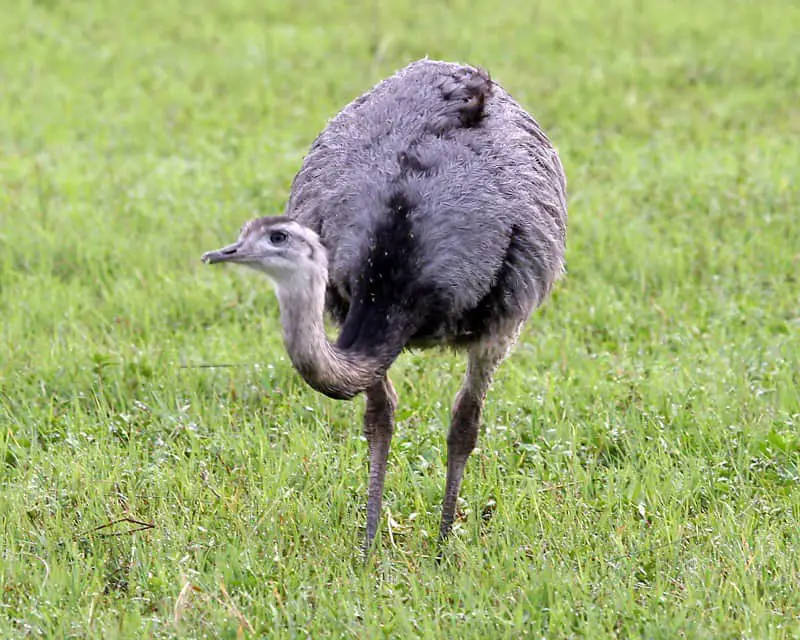
Greater Rhea
The greater rhea is considered the largest flightless bird in South America and has one of the longest wingspans. Standing at a height of 5ft, this fearsome-looking bird is a cousin of the ostrich and emu.
These birds are flightless, but their wings are not useless. Greater rhea uses their 5ft wingspan as balancing aids and is also a vital part of courtship displays.
Their breeding behaviour is highly unusual, even for birds. A male will construct a ground nest and then mate with several females. The females will then lay one egg each day for up to 10 days, and all females the male has mated with will lay their eggs in the same nest.
Females then take no further part in parental duties. The male will incubate the eggs and aggressively guard the nest, even from his mates.
Rheas have a varied diet, including fruits and berries, seeds, plants, insects, small reptiles, and birds. Rhea living near populated areas, will venture onto farms and eat the crop, causing problems for local farmers.
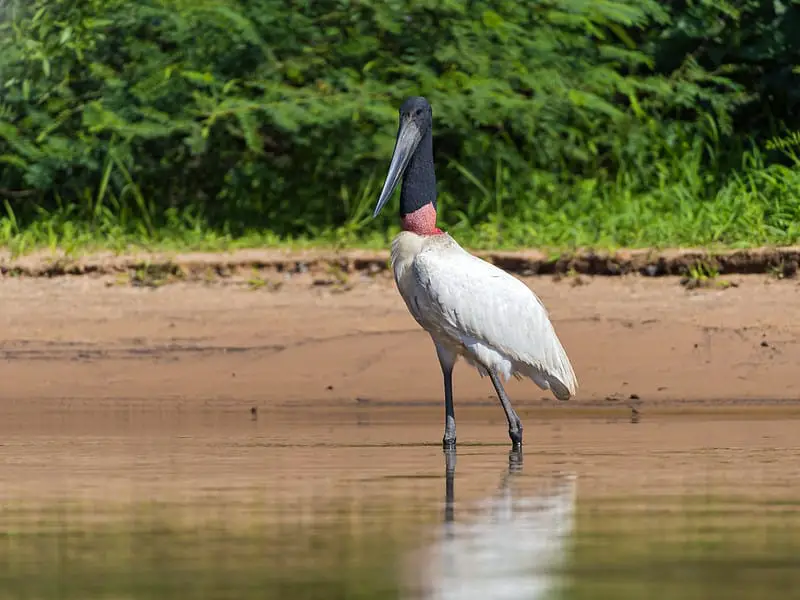
Jabiru Stork
The jabiru stork is a close second for height, reaching heights between 4 and 5ft. Jabirus have the largest wingspan of any South American species at a whopping 8ft!
Jabiru is flying birds, using their vast wings to glide along thermal air currents. They are found from Mexico down into South America, as far as Argentina. Jabiru is social birds living in large groups.
They tend to be found near water, hunting for amphibians, crustaceans, and fish. Each year, storks will add to their nest with sticks and grasses. Some nests can be several meters in size. They are usually built in trees with little or no canopy.
Most Jabiru nest in Belize, arriving around early November and staying until July. They are monogamous, keeping the same partner for the entire breeding season. Females approach males with an established nest, and they will lay 3 or 4 eggs. Both parents incubate the eggs and care for the chicks.
Jabiru is a white-bodied bird with featherless black necks and redheads. Their huge beak can measure up to 12 inches and is slightly upturned towards the tip.
Do you know how nature ensures the survival of the fittest?
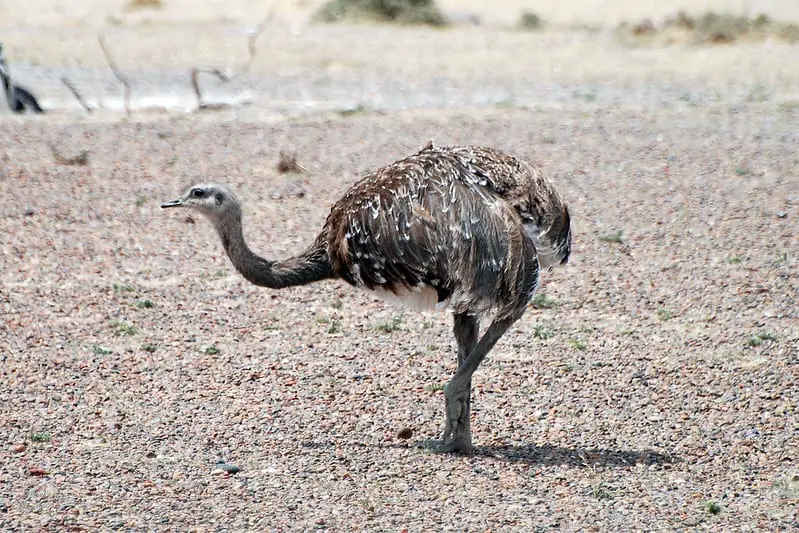
Lesser Rhea
Also known as Darwin’s rhea, these large flightless birds are a smaller relation to the greater rhea. They are so closely related that the two species can breed, producing hybridized offspring.
Lesser rhea is shorter in height, standing at 3 to 3.5ft tall, with a wingspan of up to 8ft. they use their wings to balance, allowing them to run as fast as 60kph.
Lesser rhea has mixed plumage of brown, grey, and white. Their long, muscular legs and large feet are used to defend their young fiercely.
Found in the Altiplano and Patagonia regions of South America, lesser rhea is social, living in groups of up to 50 individuals. Males will build and guard their nests, with females laying large greenish eggs near to but not in the nest. The male will move each egg himself, and he alone will incubate the eggs.
Once the eggs hatch, the male will raise the chicks alone. Males have even been known to adopt chicks lost or rejected by other males.
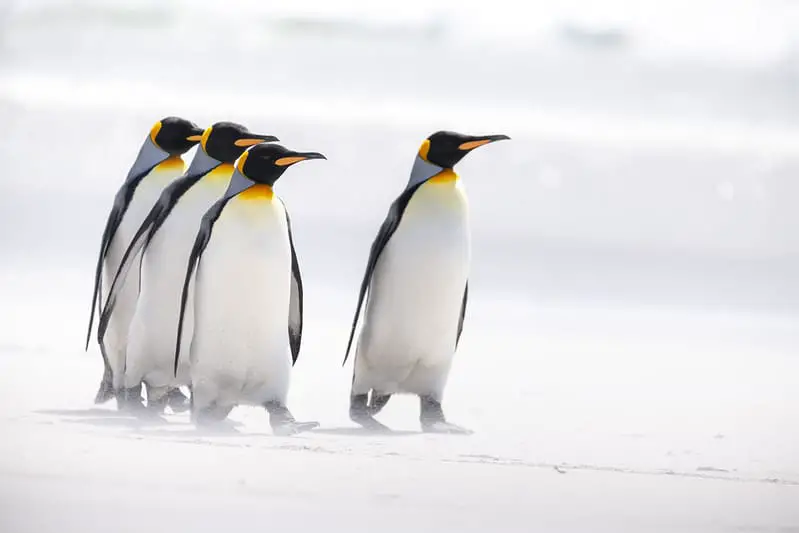
King Penguin
A surprise entry for this list is the king penguin. Naturally, penguins are seen as snowy birds, but seven species live in warmer tropical climates.
The king penguin is the second-largest penguin species, with only the emperor penguin being taller. King penguins grow to 3.3ft tall and live in large colonies. Although king penguins typically live on sub-Antarctic islands, one unique colony has been established over the last ten years in Tierra del Fuego, at the southern tip of Chile.
They are striking and beautiful birds, with large white chest and belly, black back and wings with grey underside feathers, a ring of yellow and orange across the front of their neck, a pale grey collar of feathers that doesn’t quite meet at the front and bright orange patches on the lower beak and either side of the head.
The breeding cycle for king penguins is the longest of any bird species. Taking approximately 15 months to fledge one chick, a breeding pair will raise no more than two chicks every three years.
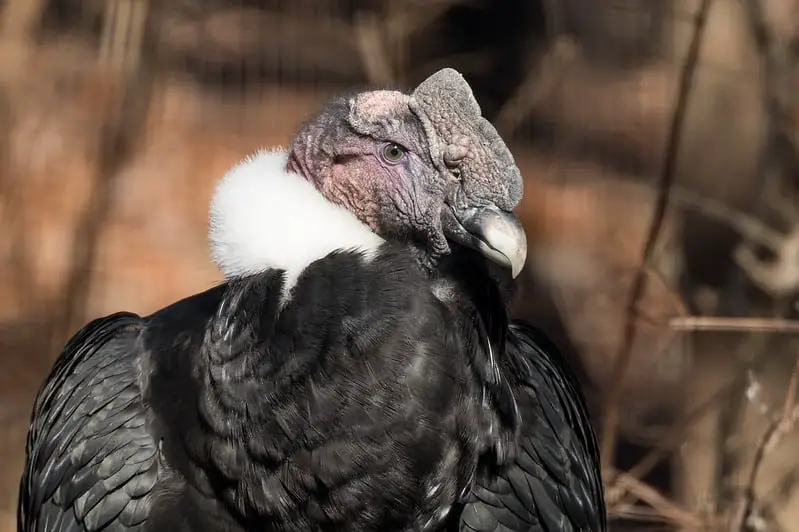
Andean Condor
As the name suggests, these enormous birds of prey are found along the Andes mountains in western South America. The mountain range is 5,500 miles long, stretching across seven countries.
Andean condors are enormous, reaching up to 4ft long from beak to tail, with an impressive wingspan of 10 feet. Due to their large body size, condors use thermal air currents to help them fly. The strong wides around the mountain ranges allow for easy gliding, which helps maintain energy.
Andean condors have bald heads of flesh-coloured to mid-brown skin and mostly black feathers. Males also have a white band of fluffy feathers around their necks.
Condors are vultures, meaning their diet consists of carrion (carcasses of dead animals). They will also steal eggs and hatchlings from other birds’ nests. Condors prefer larger animals as they provide more meat. They will also scavenge along the coastline, picking up fish or feeding on seal carcasses.
These beautiful birds are vulnerable due to their slow breeding cycle and human interference. A breeding pair will lay one egg every other year. Both parents will raise their chick for an entire year before it is mature enough to leave the nest.
Thankfully, reintroduction programs for Andean condors have been successful, and their numbers are slowly increasing.
Are Birds Vertebrates? The Class That Takes Flight
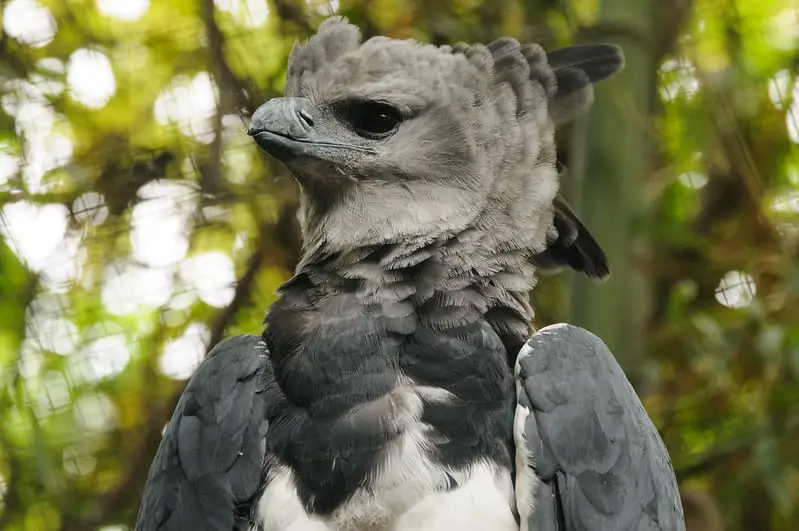
Harpy Eagle
Harpy eagles are one of the largest species of eagle in the world. They are also the largest rainforest dwelling raptor species. Adults grow between 2.7 and 3.5ft from beak to tail, with a wingspan up to 2.3m wide.
These carnivorous creatures have a distinct prehistoric appearance, with a sharp, downward curving beak, large eyes, and heavy bodies. The head feathers are a muted grey, and both sexes have a double crown of feathers that look like giant ears. The body feathers are a darker slate grey, and the chest is white. The feathered legs are white to cream, with dark grey banding.
Harpies have an extensive habitat range. They are found in Mexico, throughout Central America, and South America, as far as Argentina. They prefer tropical rainforests where the climate is warm and humid.
They are diurnal, meaning they are most active during the day when they hunt. Their diet consists of small rodents like squirrels and mice, opossums, porcupines, armadillos, and anteaters. They will also catch reptiles, including snakes and lizards.
Harpy eagles live in pairs and breed for life. Like Andean condors, their breeding cycle is long. The female will lay two eggs which both parents incubate for 55-58 days. Harpy chicks take 12-16 months to fledge and will next be sexually mature until age 4 or 5.
Do you know what the ten most dangerous animals in Australia are? Find out here
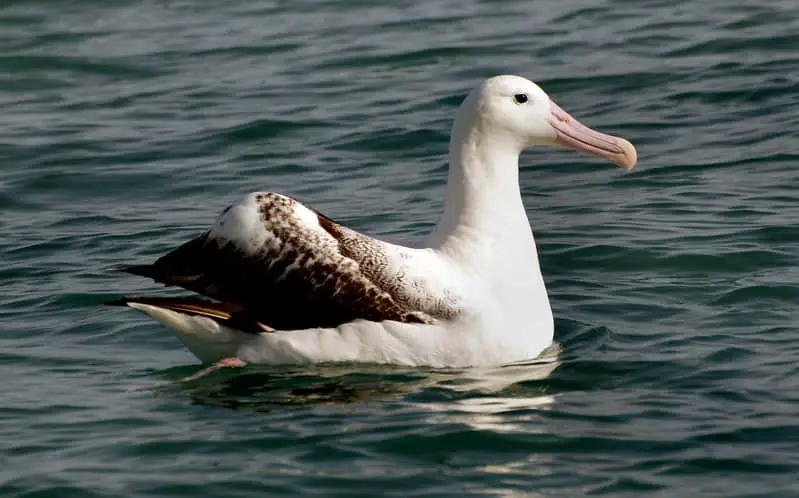
Wandering Albatross
The wandering albatross has one of the largest wingspans of any bird species at almost 12ft. That is a considerable size compared with their body, which is smaller than some larger birds on this list.
Albatrosses spend most of their lives at sea, with the fishing trip lasting as long as 20 days and covering thousands of miles. They do everything on the water, even sleeping. Albatross only venture on land during the breeding season.
Their bodies are white with pale brown and grey flecks, and their wings are a rich chocolate brown with white underside feathers. Some albatrosses are almost all white or nearly all brown, with much variety. They have a large, flesh-coloured beak perfectly shaped for catching fish.
Breeding takes place on various islands north of Antarctica. Albatrosses prefer grassy regions with lots of moss, tussocks, and peat soil. Courtship includes bill touching and circling, preening, and vocalizations. They are monogamous birds and take turns guarding the nest and incubating their single egg.
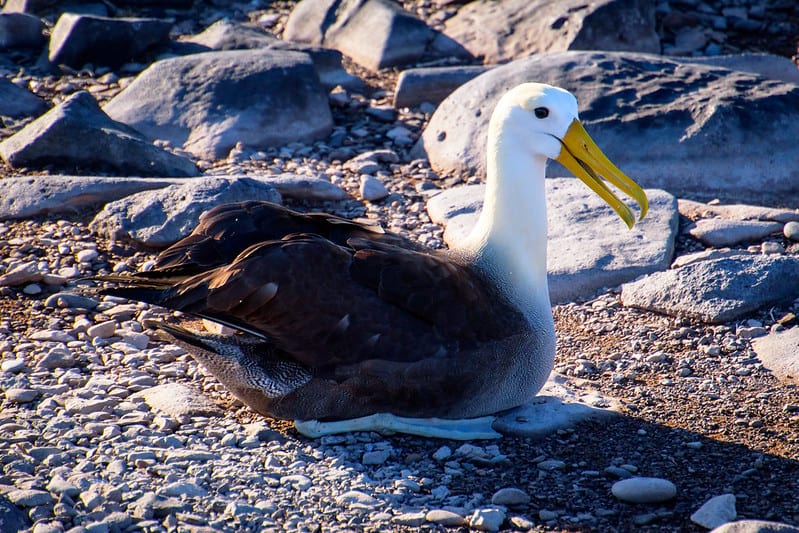
Waved Albatross
Sometimes called Galapagos albatross due to their native habitat, the waved albatross is the largest bird found on the Galapagos islands. They have a wingspan measuring 7-8ft and are just shy of 3ft from beak to tail.
Both male and female albatross look the same. They have white neck and chest feathers, with creamy yellow feathers on the head and down the back of the neck. Their chest feathers fade to brown around the belly, and the wings are a bright chestnut colour.
Like their cousins, the wandering albatross, waved albatross are marine birds. They hunt and sleep out at sea, only coming onto land to breed. They are monogamous, mating with the same partner every year.
Courtship and breeding are the same with both albatross species. Both parents incubate a single egg, and after a few weeks, nursery groups will form. Chicks stay together in large groups while the parents go out to see to hunt fish and squid. Once mature, the juveniles will fly out to sea. They may not return to find a partner until they are 5 or 6 years old.
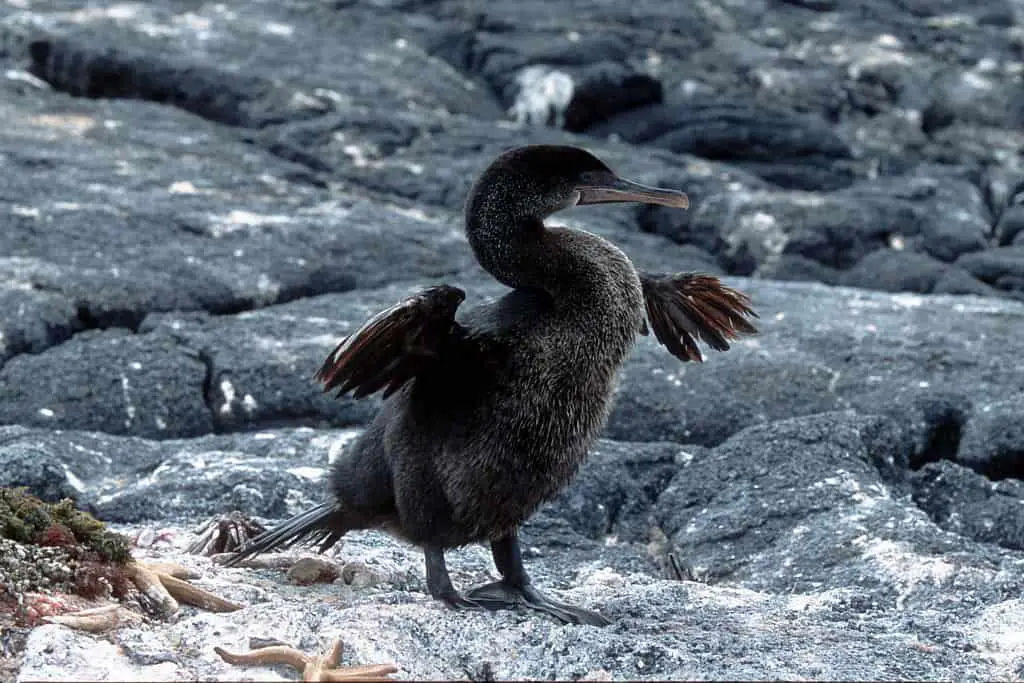
Flightless Cormorant
The flightless cormorant has several quirks to its name. It is endemic to the Galapagos, meaning it is not found anywhere else. It is the heaviest species of cormorant and is the only one that is flightless.
They are found exclusively along the coastlines of the Fernandina and Isabela islands. The shorelines are formed of lava stone and fine sand caused by centuries of volcanic activity. There are very few land predators on the islands, so flight is not necessary for cormorants.
They are monogamous, engaging in unique courtship dances. A pair will circle one another with their necks entwined. Between the two islands, there are roughly 1000 breeding pairs.
Flightless cormorants find food by diving to the seafloor. They tight their wings tightly backwards and use their powerful webbed feet to provide propulsion through the water. Their diet consists of octopus, eels, and fish.
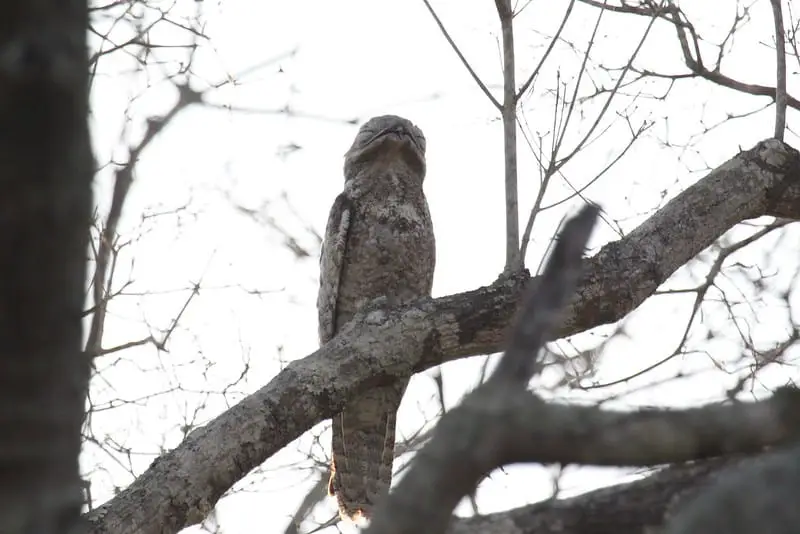
Great Potoo
With a wingspan of 2.2-2.5ft, they are the smallest bird on this list but certainly not the smallest to be found in South America. From beak to tail, they are just short of 2ft long. Great potoos are challenging to see in their natural habitat due to their highly camouflaged plumage.
Their feathers are a mottled grey to brown and blend seamlessly with tree bark. A potoo can perch on any tree branch or trunk and not be spotted.
Great potoos are known for their large eyes, which they use to spot flying insects. They typically return to the same perch during feeding. Potoos are crepuscular, foraging at dusk and into the night.
There are two subspecies in South America. N.g guatemalensis is found in southern Mexico, Guatemala, and occasionally Honduras. N.g grandis inhabits Nicaragua, Amazonia up to northern Paraguay and regions of southeast Brazil.

